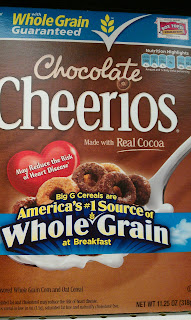Common complaints regarding consumption of artificial colors are the following:
migraines, hyperactivity, clinical depression, anxiety, behavioral problems, lower IQ, motor-coordination problems, itching, blurred vision, sleep disturbances, increase of ADHD symptoms, and stomach aches. A growing amount of evidence is evolving that the artificial dyes can be toxic and cause cancer - even through contact. It is important that everyone understands this information because our food industry has been using artificial colors in virtually everything we eat. So the recommended doses that the FDA approves for each food will not protect the person who buys and consumes foods that contain these ingredients. Individuals are now consuming a very harmful dose of artificial dyes.
"The federal government has been cracking down on artificial food dyes for more than a century in part because some early ones were not only toxic but were also sometimes used to mask filth or rot. In 1950, many children became ill after eating Halloween candy containing Orange No. 1 dye, and the F.D.A. banned it after more rigorous testing suggested that it was toxic. In 1976, the agency banned Red No. 2 because it was suspected to be carcinogenic. It was then replaced by Red No. 40. Many of the artificial colorings used today were approved by the F.D.A. in 1931, including Blue No. 1, Yellow No. 5 and Red No. 3. Artificial dyes were developed — just as aspirin was — from coal tar, but are now made from petroleum products." By GARDINER HARRIS http://www.nytimes.com/2011/03/30/health/policy/30fda.html
How to avoid artificial colors:
Buying organic foods is one way to avoid artificial colors. Another way to avoid them is to read all labels and buy alternative foods, medications, and perscription drugs.
Labels with these ingredients should be avoided:
Red 40 - Allura Red AC
Red No.3 - Erythrosine
Yellow No. 5 Tartrazine
Yellow No. 6 Sunset Yellow
Blue No. 2 - Indigotine
Blue No. 1 - Brilliant Blue
FD&C Green No. 3 - Fast Green
The article in the following link -
(http://www.upi.com/Odd_News/2009/06/01/UPI-NewsTrack-Quirks-in-the-News/UPI-55451243894399/) - informs us that the FDA approved a new regulation set for 2011 and requiring companies that use the "dried bodies of cochineal insects to create food dyes to list the ingredient on their labels". Until then, unless you don't mind eating bugs, you might want to stay away from all "artificial colors or color added" foods. Sometimes carmine or cochineal is listed in the ingredients, but not always.
Personally, our family stays away from those foods. I don't trust eating red bugs. To me red in nature means "beware or poisonous" - unless it is a certain fruit. Some people are allergic to this little bug and could put them at risk for anaphylactic shock.
Here are some examples of Cereals and their ingredient lists. All of these cereals have the FDA approved "with color added" in their ingredient lists. Can you find them? So what are these colors derived from cochineal bugs, annatto, tumeric or another natural additive? Wouldn't you like to know?

Avoid Labels that say:
"with color added" - these color additives could include carmine which is a type of bug. Food companies try to avoid writing made with bugs and so they prefer to use the FDA approved "with color added" - which is used for only naturally derived colors. Bugs are naturally derived, but wouldn't you like to know if you are eating them?The article in the following link -
(http://www.upi.com/Odd_News/2009/06/01/UPI-NewsTrack-Quirks-in-the-News/UPI-55451243894399/) - informs us that the FDA approved a new regulation set for 2011 and requiring companies that use the "dried bodies of cochineal insects to create food dyes to list the ingredient on their labels". Until then, unless you don't mind eating bugs, you might want to stay away from all "artificial colors or color added" foods. Sometimes carmine or cochineal is listed in the ingredients, but not always.
Personally, our family stays away from those foods. I don't trust eating red bugs. To me red in nature means "beware or poisonous" - unless it is a certain fruit. Some people are allergic to this little bug and could put them at risk for anaphylactic shock.
Here are some examples of Cereals and their ingredient lists. All of these cereals have the FDA approved "with color added" in their ingredient lists. Can you find them? So what are these colors derived from cochineal bugs, annatto, tumeric or another natural additive? Wouldn't you like to know?







